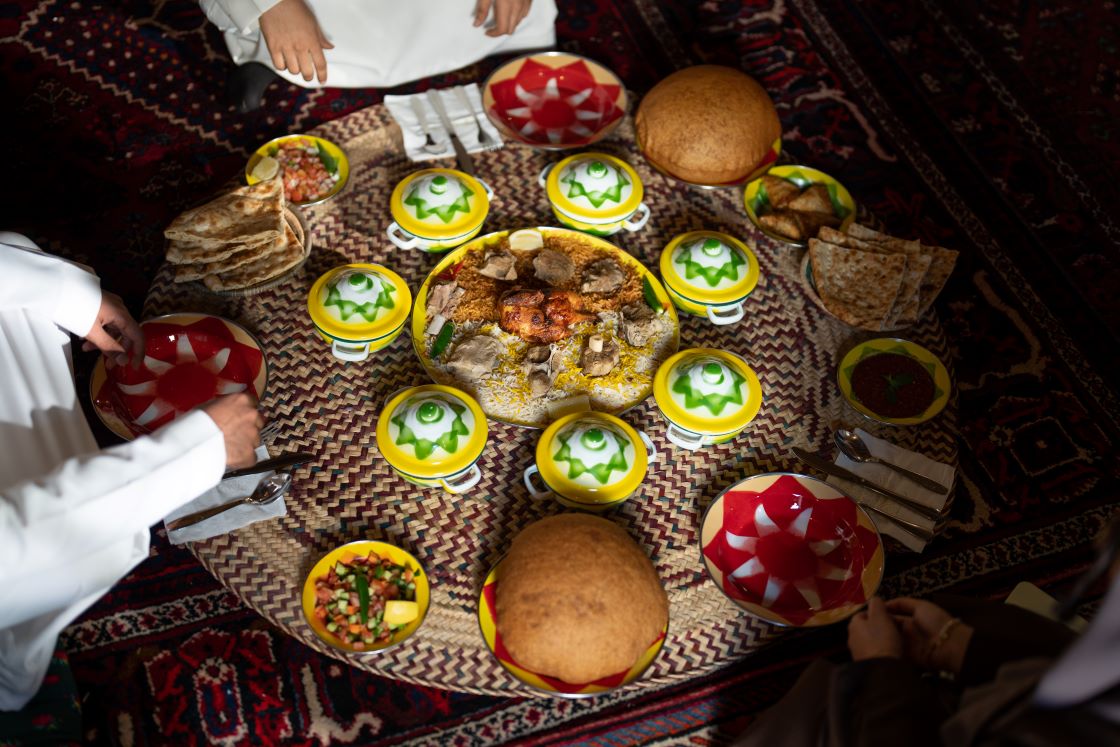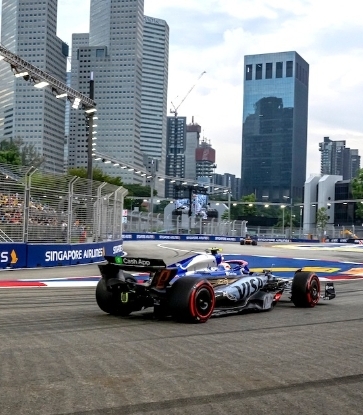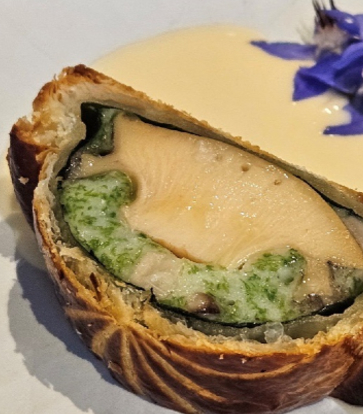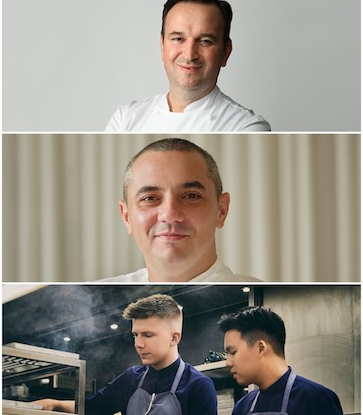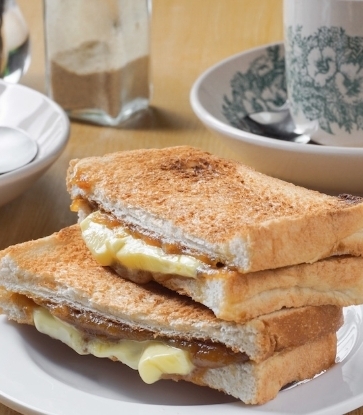The "Chinese New Year Heroes" series shines the spotlight on artisans who have toiled tirelessly to produce perennial festive goodies. While many have no qualms nibbling on festive snacks, we take a step back to share the hard work behind producing these beloved food items. Kicking off this series, Zhang Ziyue, owner of Peng Guan Bak Kwa, shows us how the barbecued jerky is made from scratch. One of the rare younger faces in Singapore's bak kwa scene, Zhang is continuing his family's heritage by making the jerky by hand in an increasingly mechanised food production landscape.
With less than three weeks before Year of The Pig arrives, the MICHELIN Guide Digital visited local bak kwa producer Peng Guan to get a behind-the-scenes look at how spicy minced bak kwa is made from its raw form to its final barbecued product.
It is barely 9am but a cooking facility in the remote Admiralty industrial estate has been swarming with activity all morning. In a space that is about the size of a four-room flat, six workers are engrossed in in their respective tasks — marinating tubs of raw pork with fish sauce and sugar, and checking on the meat in a floor-to-ceiling stainless steel charcoal oven.

Peng Guan sells minced and sliced pork bak kwa in two flavours — spicy and original. Minced bak kwa is softer and chewier, while its sliced cousin has more bite. During the lead-up to Chinese New Year, it makes about 300kg of bak kwa daily, which is equivalent to more than 5,800 pieces. This is five to six times more than the amount sold on regular days.
While it sells most of its bak kwa online on retail portals such as Shopback and Qoo10, it also runs a mom-and-pop stall in Chinatown Smith Street Market all year round.
Kenneth Goh, Associate Digital Editor of The MICHELIN Guide Digital tries his hand at making bak kwa.

According to owner Zhang Ziyue, 33, preparation work for the Chinese New Year season started as early as last June. His team of six marinate the meat and partially barbecues the jerky before storing them in sealed bags in a cold room at about minus 18 degree Celsius. Peng Guan’s tight cooking facility is crammed with towering stacks of bamboo mesh trays and tubs of marinated raw meat piled on top of each other.
Zhang starts off with the marinate — mixing a tub of 12kg minced pork shoulder with fish sauce and sugar by hand. Burying his hands into the gloopy meat mix, one needs much physical strength to maneuver the slippery and lumpy mounds of meat in an S shape for five minutes continuously.

After the mixture has rested for about 30 minutes, the mountains of marinated meat are compressed into sheets. Zhang empties a bowl of raw meat in the middle of an well-oiled bamboo mesh tray that is framed by a transparent square frame measuring 20cm by 20cm and is about 2mm thick. Using an offset spatula, he spreads the meat till it snugly fills the frame up evenly within 20 to 30 seconds. Water is dabbed on to smoothen the meat layer.
This layering step is deceptively easy; one needs to hold the offset spatula at a 45 degree angle to slather the meat smoothly on the bamboo mesh evenly. Keeping a steady hand is challenging as the mixture is coarse and slippery. Force needs to be applied evenly across the slippery layer — too much and the meat tears apart, too little and the sheet turns out undulating.

After the meat has been compressed on the bamboo trays, the trays are slotted into a sprawling charcoal oven that takes up an entire corner of the facility. The stainless steel charcoal “cupboard” is fired up with about 60kg of charcoal daily till the oven is about 100 degree Celsius.
Tending to this oven is no mean feat as one needs to rotate the bamboo tray for about 90 degrees every 10 to 15 minutes over an hour to ensure the heat is evenly distributed across the meat sheet. It also ensures that each of the four edges are smoked.
One staff is specially assigned for this sweltering job. After an hour, the meat is permeated with a smoky flavour from the burning charcoal and caramelised to a sticky-sweet glossy later. At the end of this gruelling stage, the meat is just 70% cooked.
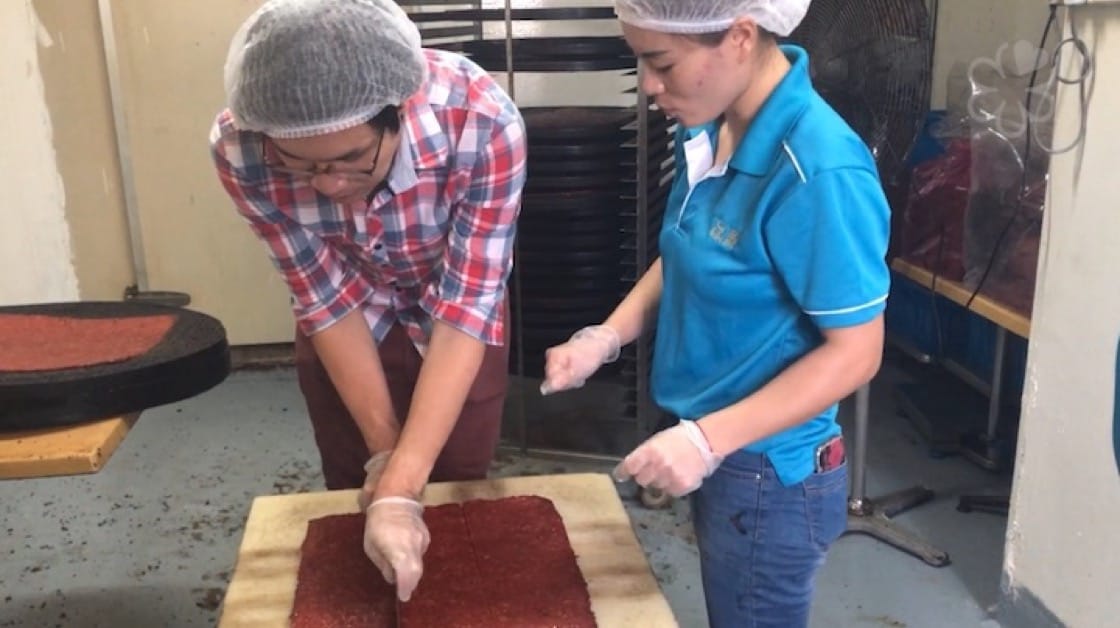
After the meat is cooled for about 45 minutes, the meat sheets are hastily scrapped from the bamboo mesh trays. A well-done meat sheet is when there are no holes and cracks. Nimble fingers are required as one needs to run a knife across all four sides of the jerky repeatedly to peel it from the bamboo tray. The charred edges are also sliced away. About 40 meat sheets are stacked in a pile before they are chopped evenly into nine squares.

Just from five minutes of standing near the grill, beads of perspiration drench one’s brows from the searing heat. When is the bak kwa is ready to be lifted from the grill? “You need to look out for the sizzling of oil and the colour of the meat becomes brighter and more translucent,” he says. In the lead-up to the festive season, his team have to barbecue the jerky for up to 12 hours.

Bak kwa was an integral part of Zhang’s childhood. During his primary school days, he helped out at an established bak kwa shop that is run by his paternal relatives. He recalls: “I love eating bak kwa and during my school holidays, I had so much fun helping out with bak kwa deliveries with my father. It was my play time.”
While working as an administrative executive in his 20s, he briefly learnt how to make bak kwa during the weekends. At 27, he decided to strike it out on his own by quitting his full-time job to start Peng Guan with $120,000 — from his personal savings and a loan from his maternal uncle. “Bak kwa has always been a part of my life,” he says: “I also want to continue the traditions and legacy of my grandparents in my own way.”

He also plans to introduce frozen semi-cooked bak kwa for barbecues and a halal chicken jerky in the future. Zhang’s favourite part of making bak kwa is pulling out the trays of partially baked meat from the charcoal oven. “It feels good when you see the entire sheet of meat turns out properly without any tears.”
When asked if he ever gets sick of eating bak kwa, he shakes his head with a grin and says: “Making bak kwa is my life and seeing a product that I have created keeps me passionate and happy.”




